The Ultimate Guide to Review Requests (With 4 Outstanding Templates)
Written by Chintan Zalani, Content Marketing Specialist at The Ecom Academy
How many times have you seen a consumer buying a product from your store and willfully going to its online listing for reviewing their purchase? It’s rare.
However, you can expect a product review after a poor post-purchase experience. The customer won’t hesitate to give it one star and use extreme language. Here’s an example of a one-star review on a carbon-monoxide detector alarm. Since the product directly affects the life of a customer, they start their review with an attention-grabbing title “WILL GET YOU KILLED…”
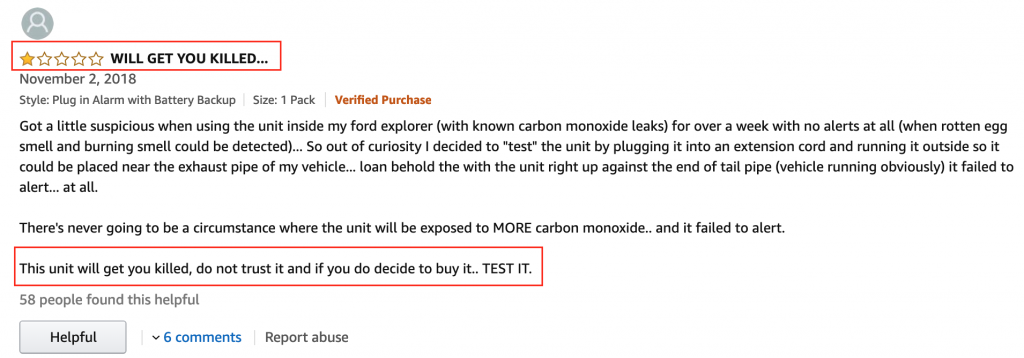
Ouch.
Since customers don’t like to review their purchases, you would expect them to not look at the reviews while buying, right?
I hate to break to it you, but:
Half of the adults under 50 routinely check online review before buying new items.
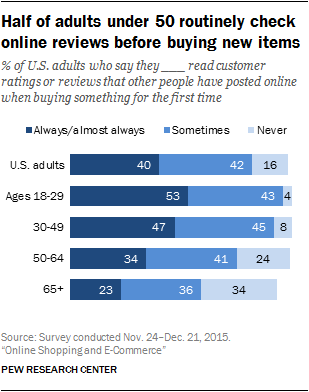
Damn, son!
Don’t worry though.
If you are struggling with feedback on your products, then the article today will guide you on how to send persuasive review requests. Let’s start with the research and data-backed tips for gathering reviews. Later, we’ll look at four templates (both email and text message) that you can use straight away in your business.
4 Data-Backed Tips For Soliciting Reviews From Customers
For most customers, you need to nudge them for receiving feedback on your offerings. However, occasionally buyers review your product without an explicit prompt. Let’s look at both these aspects with data, examples, and research on customer motivations.
1. Strike a Positive Emotional Chord with Your Customer Through Your Buying Experience
Remember how your customers always report the poor experiences they have with your products?
Well, turns out, if you offer an excellent buying experience, then that could also turn into a positive review. In a survey of 100 users by Trustpilot, customers said they are likely to ‘applaud a company with a good review’ if their experience is exceptionally good.
One of their surveyed shopper in the above research said:
“Reviews are kind of like an on-demand emotional type of thing.”
Further, the survey also found that the likelihood of getting a review is higher if you’re a run locally and a small company.
That isn’t entirely new information – If you’re going direct to consumer (DTC), we already talked about the importance of creating an excellent customer experience.
Now you know that customers won’t just pay more for your products, but even drop reviews for creating a stellar experience.
Two birds and one stone – ✔
Onwards to more profit!
Note: Don’t confuse emotional appeal with your overall experience with merely using emotional words in your email subject line (such as like, love, and happy). In its analysis of 3.5 million reviews, Yotpo found that these words alone won’t drive MORE customer reviews. Instead, they impact reviews negatively.
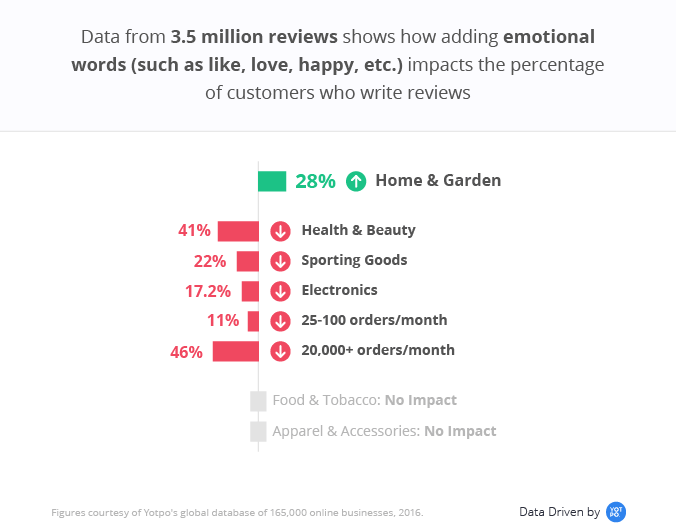
2. Give Your Customers a Sense of Community
Why did you launch your business?
Alongside, goals like more freedom and making money, you likely also have an altruistic motivation of contributing positively to the lives of others. As human beings, we have a need to belong. We want to contribute to a community and like to influence the decision-making of others. And that’s another reason your buyers will review your product.
Here’s how a surveyed shopper put it for Trustpilot:
“…it’s good that people have read my review. It helps influence their decision if they want to buy with the company or not.”
As I told you, creating engaging content can facilitate building a thriving community of like-minded enthusiasts for your brand. Else, you can also kick start a Facebook Group and add value to the lives of your customers.
For instance, Glossier has a tightly-knit community around their brand that helps get positive reviews like the one below on their products.
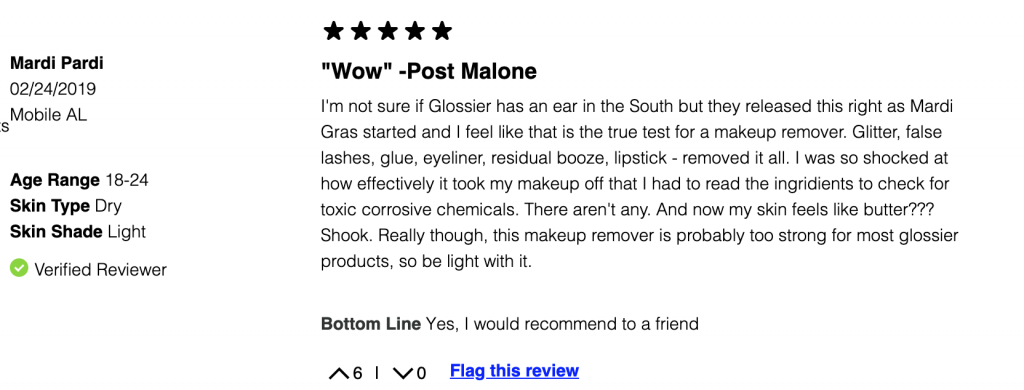
3a. Incentives in Exchange of Reviews Work Well (In All Kinds of Industries)
Recently, I bought a membership from a budget hotel chain. I met the following email that promised ‘exclusive discounts.’
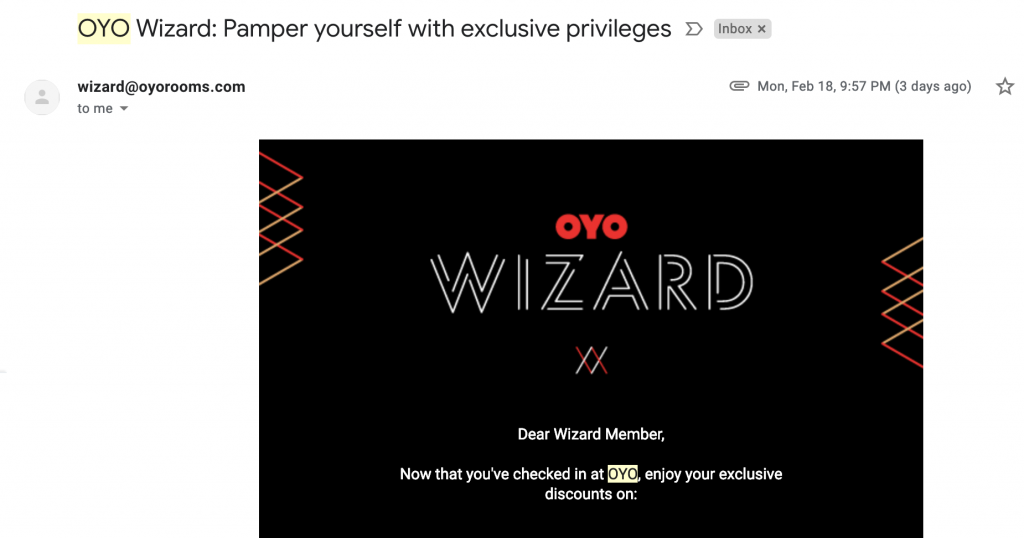
Woah!
Since I wasn’t expecting these coupons, I was pleasantly surprised and spread the word about the membership to my friends.
Consumers love discounts and privileges. Yotpo found that email subject lines with words that indicate a financial incentive (like free, coupon, and discount) increase the conversion rate from shoppers to reviewers by 18.5% (on an average).

Next, these customers will return to your store to shop more and increase your repeat orders. That’s one of the three main levers of your Ecommerce Growth Machine that could potentially double your business.
See how that’s done?
Pro Tip: Depending on the scale of your store and your repeat customers, you can also reward your reviews in the form of recognition. Yelp does it with their Elite badges and even prioritizes the reviews by these users in their feed.
3b. Selectively choosing the customers that review your business is unethical and bad business practice. Don’t do it …
If you’re review-gating (selectively choosing the customers that had a positive experience to leave a review), then Google can take action against you.
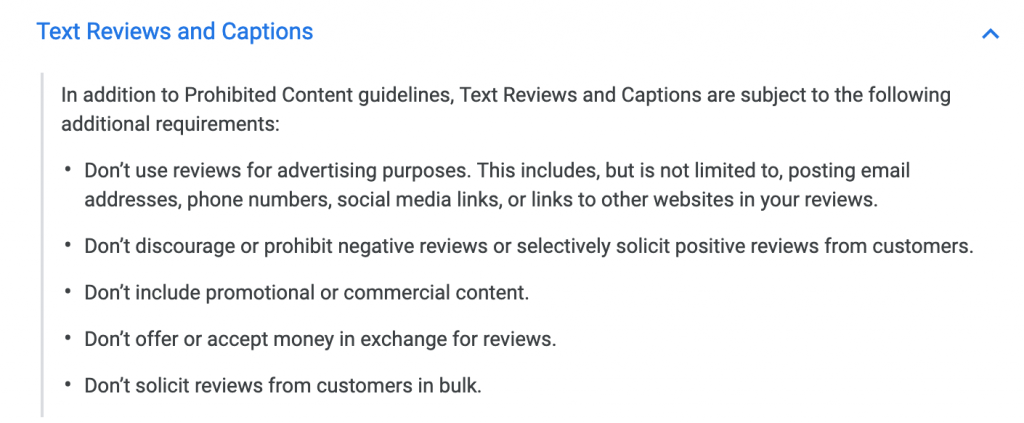
Indeed, Yelp goes out to even state that you shouldn’t ask for reviews. The reason is most businesses target happy customers, and it results in a biased rating. You can also get fined if you’re caught paying for positive reviews.
I know 3a and 3b might confuse you, so here’s the verdict for you:
Don’t incentivize and try to influence your ratings on third-party websites. Solely encourage customers to drop testimonials and reviews for the product listing on your store.
4. Make it easy for your customers to review you
Customers use an average of seven social media channels to interact with brands now. So you need to be present at all the places where your customers hang out. In a study on the motivation of people to write reviews and the role of personality in it, the trait of “neuroticism” was found to be an important factor. Here’s how the study recommends adapting the effect:
“To adapt to the moderating effect of neuroticism, online review websites should make the writing of reviews as easy as possible, since neurotics are easily frustrated.”
Hence, start with accepting reviews on your customer’s favorite social media platform. Then, consider more sites from this list of 22 customer review sites. If it looks like TOO much of effort, then you can leverage social media automation to manage multiple platforms.
In its study of 30,000 online businesses, Yotpo found that sites with reviews see an increase in SEO traffic. So you can’t forget about local SEO.

Is your mind already brewing with ideas for sending persuasive review requests?
Great. Now, before I share a few ready to use templates, let’s tear down the feedback request process of Chaayos, an Indian cafe chain.
Teardown: How Chaayos Requests Its Customers for Reviews by Coupling Sms with Interactive Forms
Note that Chaayos doesn’t display its reviews on its website, but you can learn how to gather insights from your customers through its solicitation below.
Chaayos has a crisp message for me post ordering food from their outlet. The brand directly requests me to help make my experience ‘flawless.’ In that interest, there’s a simple link soliciting my feedback.
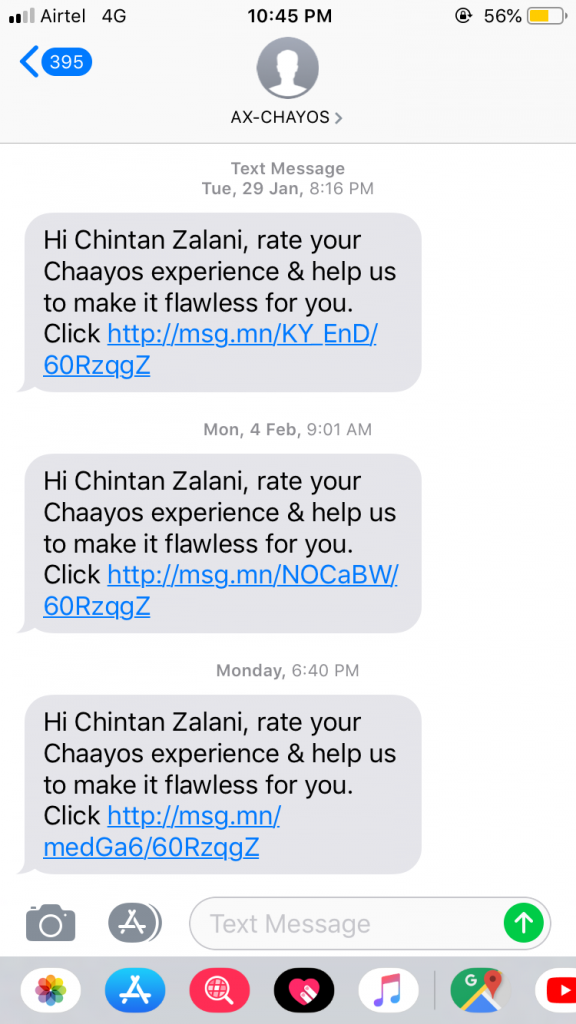
I’m presented with a simple type form with three questions.

If I rate them less than 7 stars, then the following questions change asking me to share how they can serve me better.

And if I would like a callback.

If I give them a 7-star rating, then they question me about other products that I would like to see at their stores.

Lastly, even if I give Chaayos a 10-star rating, they ask for feedback on what the brand does “really well.”

One aspect I can see Chaayos do better on is personalizing the first text message they send to a customer. If I receive the same text every time, then I’m desensitized with the message, and will likely ignore it. Also, if they can do away with my complete name and only use my first name, it would make the conversation more human.
Alright, now it’s time to put the data-backed tips and example in action. Here are a few templates for your help.
Two Effective Customer Feedback Text Message Templates
While you can directly share a link to share feedback with your customers, it doesn’t reflect well on your brand. Look at the text message that Indigo Airlines sends to its customer requesting to hear about their ‘travel experience.’

The message is impersonal, self-serving, and ungrateful.
- They start without addressing the flyer by their name, rather a ‘6E Customer.’ It comes across as if I’m a commodity for them that generates revenue.
- They claim that they are ‘eagerly waiting to hear’ from me. It stinks of fake enthusiasm.
- They wish me ‘more 6E flights.’ Not so subtle self-promotion, aye?
Now, to avoid providing such a bad experience to your audience, let’s look at a few text message templates that you can adapt for your business.
1. Tell Your Customers How Their Feedback Will Improve Your Offerings
Your enthusiastic customers would love to play a part in improving your services and products. Hence, you can straight out tell them to help you with it. The message can read like:
“Hi {Name}, It was a pleasure to see you shop from our store today. Got any tips on how we can serve you better? Share them here: {link}. We’re grateful for your feedback.”
2. Tell Them That Their Opinion Carries Weight
As I mentioned, people like to know that their voice counts and that they can influence other customers. You can send something along the lines of:
“Hey {Name}, We appreciate you trusting us by buying {name of product} from our store. How do you feel about it? Your opinion can help other buyers make the right choice. Can you please share it here: {link}.”
Next, let’s explore a couple of email templates.
Two Email Templates For Requesting Online Reviews
If email is your medium of communication, then here examples you can take lessons from.
1. Tell Your Customer How Easy It Is to Leave a Review
In the email below, Lenskart (an eyewear store in India) promises that their survey can be completed in “30 seconds” and consists of merely “2 questions.” Further, they promise to serve the customer better. And even enter all reviewers into a lucky draw of Amazon gift cards.
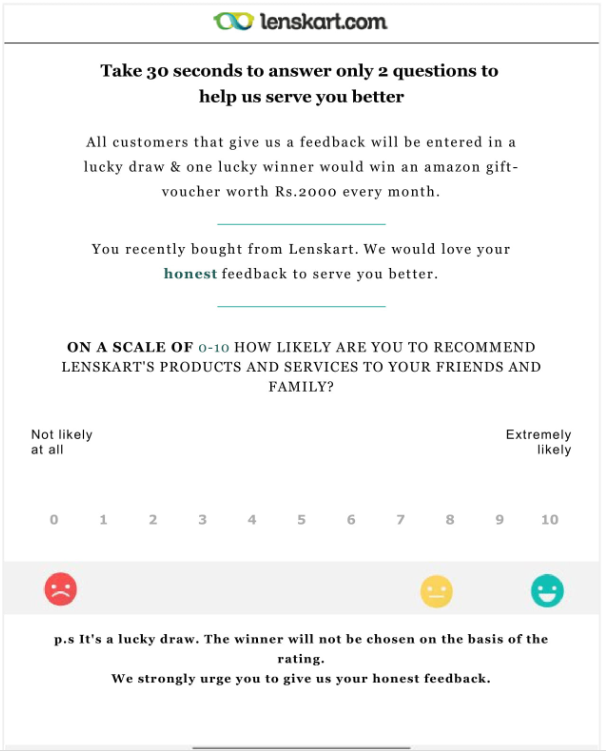
Here is a template you can use that’s based on the above example:
“Hi {first name of the customer},
Thanks for shopping from our {your store name} website. Can you please a minute and share your experience of buying {your product} from our store here: {link}. We’ll learn from your experience and use it to serve you better.
Appreciate you taking out time and sharing your honest feedback.
Best,
{Your customer happiness manager name} from {your brand name}”
2. Directly Ask the Customer If You Met Their Expectations
A consumer almost always wants to achieve an objective when buying a product. So it makes sense to simply ask them “how you did” as per their expectations. In the email below, Redbus (a bus booking platform) asks the customer for sharing their traveling experience with them.

And here’s the second template directly asking “how you did”:
“Hi {first name of the customer},
Can you please share how {your product} fared as per your expectations and if you’re likely to recommend us to your friends and family? Here is the link to share your review: {link to the review page}.
Thanks,
{Your customer happiness manager name} from {your brand name}”
And that’s about it.
Review Requests Build Social Proof. Now It’s Your Turn To Get Some!
Unless prompted and incentivized, your customers usually don’t leave a review. Pew Research Center found that only one-in-ten Americans post their own reviews of products, services, and restaurants.
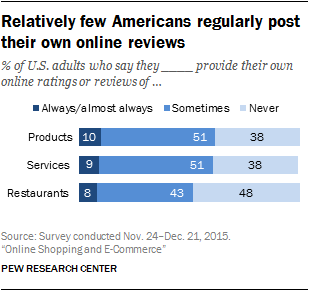
However, I hope the data, examples, tips, and templates in this guide will help you in coming up with an effective system to generate more reviews from your customers.
Also, remember that timing your review request messages (email or text) appropriately is also important. Allow sufficient time to your customer to use your product before requesting a review. Else, it comes across as pushy and can turn off the customer.
What’s your experience with sending review requests and how have they impacted your store? Are there any other tips and templates that have worked for you? I would love to hear about them in the comments below.
Companies our team has worked with:











